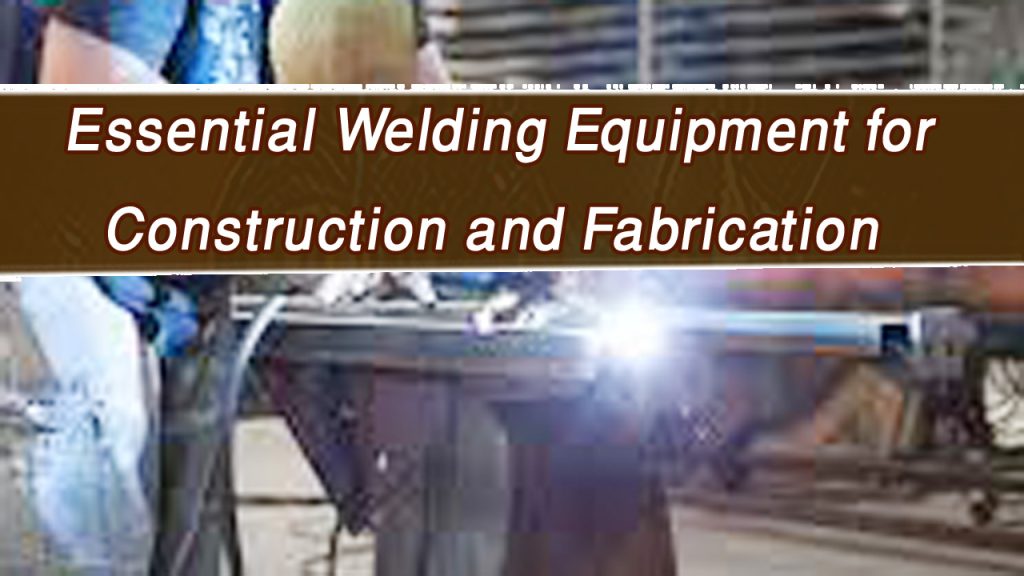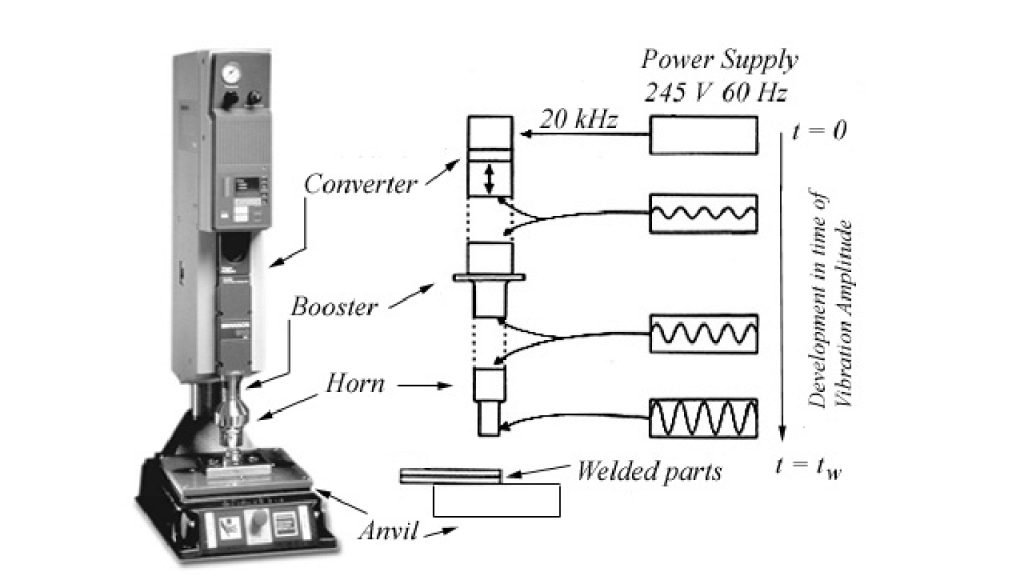If you’re diving into the world of welding for construction and fabrication, you already know that having the right tools makes all the difference.
I’ve spent years working with welding equipment, and trust me—selecting the right gear can save you time, boost your work quality, and, most importantly, keep you safe.
If you’re setting up a small shop or working on large-scale construction sites, certain welding equipment is non-negotiable. Let me guide you through everything you need to know about the essential tools and why they’re so important.

Image by southernmetalfab
Why Choosing the Right Welding Equipment Matters
Before we jump into the specific tools, let’s talk about why this is so crucial. Welding is an intricate process that requires precision, safety, and efficiency. The equipment you choose directly impacts:
- The quality of your welds.
- Your safety while working.
- How quickly and efficiently you can complete projects.
- Your overall productivity.
By investing in the right tools upfront, you can avoid costly mistakes, downtime, and potential accidents.
Basics of Core Welding Equipment
When it comes to welding for construction and fabrication, certain tools are essential. Here are the basics that every welder should have in their arsenal:
Welding Machine
The heart of any welding setup is the welding machine itself. It’s important to choose the right type of welding machine based on your project needs.
- MIG Welders: Great for beginners and large-scale fabrication. They’re fast and easy to use.
- TIG Welders: Perfect for precision work and clean welds, especially with thinner metals.
- Stick Welders: Reliable and versatile, ideal for outdoor construction projects.
Each type has its advantages, and the right choice depends on the materials you’ll be working with and your level of expertise.
Welding Helmet
Safety is non-negotiable in welding, and a good welding helmet is your first line of defense. Modern helmets often come with:
- Auto-darkening filters: Adjust the shade automatically to protect your eyes.
- Comfortable headgear: So you can work for extended periods without strain.
- High durability: To withstand sparks, heat, and impact.
Never compromise on the quality of your helmet—your eyes and face are too important.
Protective Clothing
In addition to a helmet, you’ll need full protective clothing to shield your body from sparks, heat, and UV radiation. This includes:
- Welding gloves: Heat-resistant and durable for handling hot metals.
- Welding jacket: Made from flame-resistant materials like leather or special fabric blends.
- Boots with steel toes: Protect your feet from heavy objects and hot materials.
Proper gear not only keeps you safe but also gives you the confidence to focus on your work without distractions.
Welding Electrodes or Filler Materials
The type of electrode or filler material you choose depends on the welding process you’re using. Here’s a quick breakdown:
- MIG Welding: Requires a spool of wire fed through the welding gun.
- TIG Welding: Needs filler rods that match the metal being welded.
- Stick Welding: Uses consumable electrodes coated with flux.
Always match your filler material to the base metal for strong, clean welds.
Advanced Tools for Construction and Fabrication
Once you’ve covered the basics, it’s time to look at some advanced tools that can enhance your efficiency and expand your capabilities.
Plasma Cutter
A plasma cutter is a game-changer for cutting metal quickly and precisely. It uses high-temperature plasma to slice through thick materials with ease. This tool is especially useful for construction projects where time and precision are critical.
Angle Grinder
An angle grinder is a versatile tool for:
- Cutting metal parts.
- Grinding down rough welds.
- Polishing surfaces for a clean finish.
With various attachments, an angle grinder becomes indispensable for fabrication work.
Welding Clamps and Magnets
Keeping your workpieces steady is crucial for accurate welds. Welding clamps and magnets help you:
- Align parts perfectly.
- Keep materials in place while welding.
- Work faster with fewer adjustments.
These tools are small investments with huge payoffs in terms of precision and ease of use.
Welding Table
A sturdy welding table provides a flat, safe surface to work on. Look for tables that:
- Are made from steel.
- Have adjustable heights.
- Include clamping slots for added functionality.
A good welding table improves both safety and efficiency in your workspace.
Safety Equipment You Can’t Overlook
Welding comes with inherent risks, but the right safety gear minimizes them. In addition to your helmet and clothing, don’t forget:
- Respirators or Masks: Protect your lungs from harmful fumes and particles.
- Fire Extinguisher: Always have one within reach in case of sparks causing accidental fires.
- Safety Goggles: Useful when cutting or grinding materials.
Investing in safety gear not only protects you but also ensures compliance with workplace regulations.
Specialty Equipment for Complex Projects
For larger or more intricate welding projects, you may need additional tools like:
- Spot Welding Machines: Ideal for thin sheets of metal, often used in automotive fabrication.
- Pipe Beveling Machines: Make precise cuts for pipe welding in construction.
- Welding Automation Systems: Boost productivity for repetitive tasks on large construction sites.
These tools are typically more expensive, but they’re invaluable for professionals tackling complex jobs.
How to Choose the Right Welding Equipment
With so many options out there, how do you know what’s right for you? Here are some tips:
- Assess Your Needs: What materials will you be working with? What type of welding will you do most often?
- Set a Budget: High-quality equipment is an investment, but there are reliable options for every price range.
- Read Reviews: Learn from other welders’ experiences to find the best brands and models.
- Test Before Buying: Whenever possible, try out equipment to ensure it feels comfortable and performs well.
Maintaining Your Welding Equipment
Once you’ve invested in your tools, keeping them in good condition is key. Regular maintenance ensures:
- Longer lifespan for your equipment.
- Consistent performance.
- Improved safety.
Here’s what to do:
- Clean your tools after each use.
- Check for wear and tear on cables, electrodes, and protective gear.
- Store equipment in a dry, organized space.
Conclusion
When it comes to construction and fabrication, having the right welding equipment is half the battle. From basic tools like welding machines and helmets to advanced gadgets like plasma cutters and automation systems, each piece plays a vital role in your success.
By choosing quality gear and maintaining it properly, you can work efficiently, produce high-quality results, and stay safe on the job. Whether you’re a beginner setting up your first shop or a seasoned professional tackling large projects, the right tools make all the difference.
Welding is both an art and a science, and every piece of equipment is a part of your creative process. Take your time to choose wisely, and enjoy the satisfaction of crafting something incredible.
FAQs
What is the most important piece of welding equipment?
The welding machine is the most critical piece, as it powers the entire process.
Can I start welding with basic equipment?
Yes, you can start with a simple setup including a welding machine, helmet, gloves, and electrodes.
Do I need a plasma cutter for fabrication work?
While not essential for beginners, a plasma cutter is highly useful for precise and efficient metal cutting.
How do I maintain my welding tools?
Regularly clean your tools, inspect for damage, and store them in a dry, organized area to prolong their lifespan.
What safety equipment is necessary for welding?
You’ll need a welding helmet, protective clothing, gloves, respirators, and a fire extinguisher for complete safety.

Endow Russel the owner chief editor of giftendow.com . I am a mechanical engineer and assign to an local firm with much experience in welding and industrial equipment.

